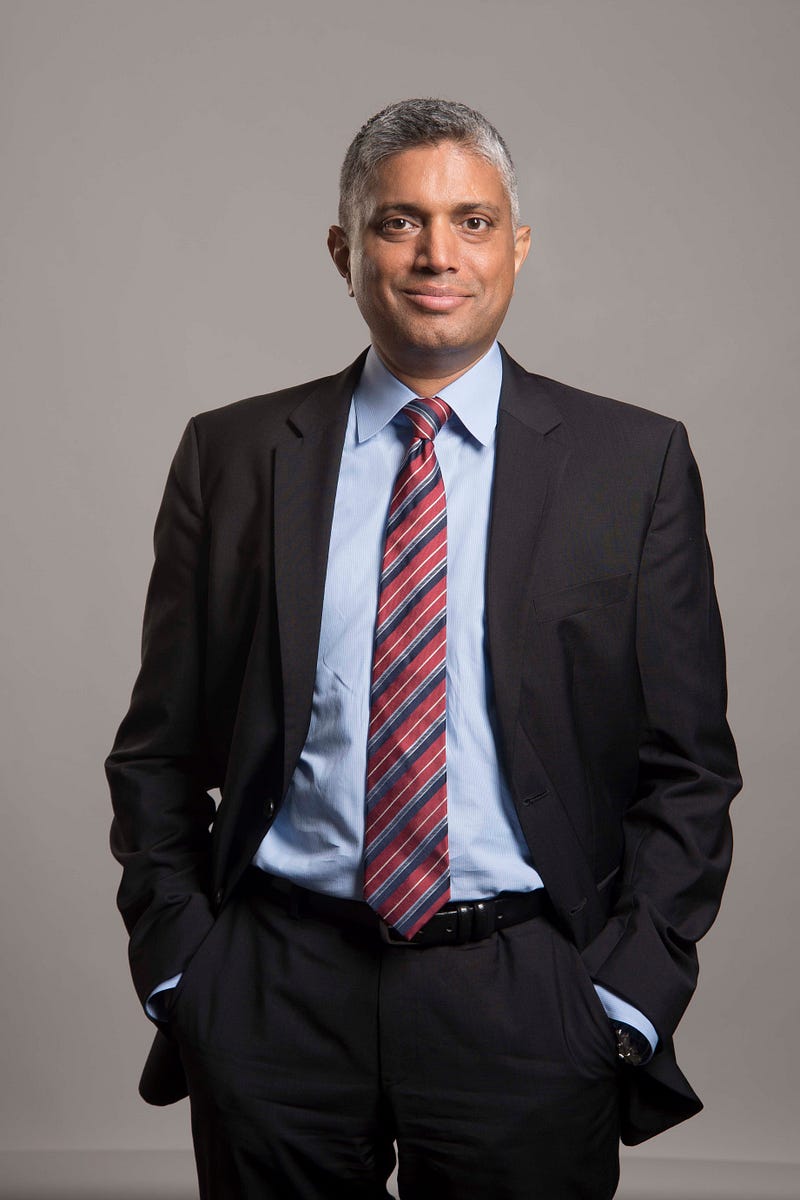How to Fail Smart
Why those seeking to innovate must allow for failure along the way.

Successful innovators are often well acquainted with failure.
Luis Martins jokes that he appreciates being associated with failure. But as a Texas McCombs professor who teaches entrepreneurship and innovation courses, Martins has gotten where he is through a willingness to try new approaches. For anyone who likewise wants to innovate, Martins, who is director of the Herb Kelleher Center for Entrepreneurship, Growth, and Renewal at McCombs, says we must be accepting of failure.
He argues that both individuals and organizations grow more from our failures — which encourage the questioning of preexisting beliefs — than from ego-bolstering successes.
What do we gain from an unsuccessful outcome?
When you make informed trials from a hypothesis, and it doesn’t work out, you learn from it. An innovative organization considers that a path to success. I don’t know why people think that every new project should succeed in the first shot. Most organizations don’t allow failures but are surprised employees don’t come up with good ideas. It’s because people are afraid. If they fail, they get all the burden of that responsibility. They’re taking on all the risk and the rewards are going to the organization. If you want to be innovative, you have to insist that people take chances and fail.
For someone interested in innovation, what’s the best way to view failure?
You have to embrace failure as a natural consequence and companion of entrepreneurship and innovation. Have the right mindset and self-reflection to learn from failures and the resilience to bounce back and try again. A large number of entrepreneurs fail. You have to be humble and know that that’s always a probability. You can’t control everything, just what you do — which is learn and try better. Being safe never works because you just don’t take chances.
As a manager, ask yourself, “How many mistakes am I willing to let my employees to make in a given week?” If it’s zero, then you can’t ask them to innovate.
What’s involved psychologically when we’re willing to fail?
One construct is called regulatory focus: What things drive you while you’re pursuing goals? Promotion regulatory focus is a sense of eagerness where you’re trying to make sure you’re not missing opportunities. The flipside is preventive focus, which is a certain level of vigilance to avoid making mistakes. These internal drivers might predispose you towards being cautious and making more errors of omission or being eager and making more errors of commission.
The second construct is around mindset. In a fixed mindset, people are trying to demonstrate what they know. Every time they try something, it’s a validation or invalidation of their selves. A growth mindset person is willing to try and see what they learn from the failure.
What do you recommend to someone who realizes an idea may not work out?
Think like an experimenter. If you can predict the outcome, you probably don’t need to do the experiment. There’s a potential that it’s going to come out different than you expect, but you go in with a certain hypothesis: “If we put more money into marketing on a certain platform, it will result in a sales increase of roughly this much.” Then you see if it comes out the way you expected. If it doesn’t, then you go back and see what went wrong. Were certain assumptions not accurate? Were you not using the right data? Smart failure involves testing a hypothesis based on good reasoning, assumptions, and data.
Failure no longer has such a negative connotation.
Fifty years ago, if you tried and failed, that might have had a stigma attached to it. But today, failure is a badge of honor in some circles; some organizations celebrate failure. You try a project that doesn’t work out, and you speak to your organization about what happened, what worked, and what didn’t. Not only do you learn, so do other people.
Then there’s a personal element to it. A growth mindset person tries to figure out what they can learn so they can improve. A fixed mindset person just gets frustrated or agitated. There’s some combination of the individual’s capacity to fail and the organizational or cultural context in which the failure occurs.
How do we instill the right outlook at an early age?
In one of my favorite interviews, Fareed Zakaria asked Sara Blakely, the founder of Spanx, where she got the courage to try things. She said as a kid, her father would ask her and her brother what they’d tried and failed at. If they didn’t have a good story, he’d be disappointed. He made trying and failing okay and almost expected. The way I’m raising my kids, I want to build their resilience and willingness to fail rather than be perfect all the time, with an orientation towards reflecting and learning. I don’t know what kind of jobs they’ll have or circumstances they’ll face, but if they’re willing to adapt, learn from failures, bounce back, and have that resiliency, that will serve them better than just jacking up some particular skill.
Within an organization, when it comes to trying new ideas, what options does a company have?
Most organizations celebrate the people who pick good ideas. They also reward the people who don’t make any mistakes, the good stewards of the organization’s resources. The people who take a chance and fail are punished. The slackers — who say “no” to good ideas — are tolerated. Because errors of omission are invisible and errors of commission are visible, most people just keep their head down and don’t try anything. If you want to be in the innovation business, you want to be entrepreneurial, you have to focus on the errors of omission. The only way you’ll know that somebody is not passing up on good ideas is by how many bad ideas they support.

How do you create an organization that allows for failure?
Make failure normal. Some organizations, like 3M, are consistently innovative because of their culture. Unless you make it a norm, it’s a one-off. But if everybody is trying and failing, any one failure is not that spectacular — nobody is stopping to look at you. You need a culture in which everybody has a stake in the enterprise of trying new things. If some people are trying and some people are not, that’s a problem. Make it an expectation that everybody is going to try.
What are some real-world examples?
One of my favorites is an Israeli company called Better Place. Its concept was to sell electric cars using a cell phone business model. Instead of minutes you’d buy miles and you’d get a discounted car — a Nissan LEAF — like you’d get a discounted phone. You’d have a monthly plan for miles claimed through a battery swap. They did all their due diligence. But there’s a critical assumption they learned the hard way: Unlike minutes that are added to your phone automatically, you had to go claim the miles. People found the practice too onerous. The company built the infrastructure and had tons of money poured into them, but it failed. They learned from it and implemented a taxi fleet setup. For taxis, it’s less onerous to claim the miles than for the general public. The critical assumption got violated and the second trial made a lot more sense.
They managed to turn it around. But are there certain ideas or approaches that are destined to fail?
The probability of failure goes up when you use a technology-push mindset — the “build it and they’ll come” approach. You come up with a product you think is cool, so you think everybody should love it. Then, you find out “everybody” was just you and your friends. You need to be super smart to figure out what will work, and that’s a dangerous assumption. You need to learn smart, which requires you to test.
Another mistake happens during product development. There’s a strong tendency to overdesign prototypes: The more you refine it, the more you fall in love with it, the more you think it’s perfect, and the more resistant you are to revisions. You need something rough enough that you’re not committed to it.
I’m also leery of managerial judgment as a substitute for market judgment. Managers have career concerns to worry about.
Within organizations, if it’s no longer taboo, how should we discuss our failures in the workplace?
I’d speak about what motivated me to take on the project. Ideally, that will involve improving the organization. People can see that you’re doing it for a purpose that’s meaningful.
Second, talk about the assumptions you had going in. What worked, what didn’t work, what were your takeaways, and how did they inform your next attempt? If you discuss failure in that context, I can’t see how any reasonable organization will see that as a problem.
On the other hand, if you say, “I tried throwing money down a black hole to see what would happen,” that’s not the kind of experiment most organizations want you to run. In that case if you say, “I’m constantly trying new things and failing,” that might be a little problematic.
How do you cultivate your own freedom to fail?
I tell myself I want to try new things. It takes a certain mindset. If I were to do the same thing over and over, it would drive me crazy.
Story by Jeremy M. Simon


